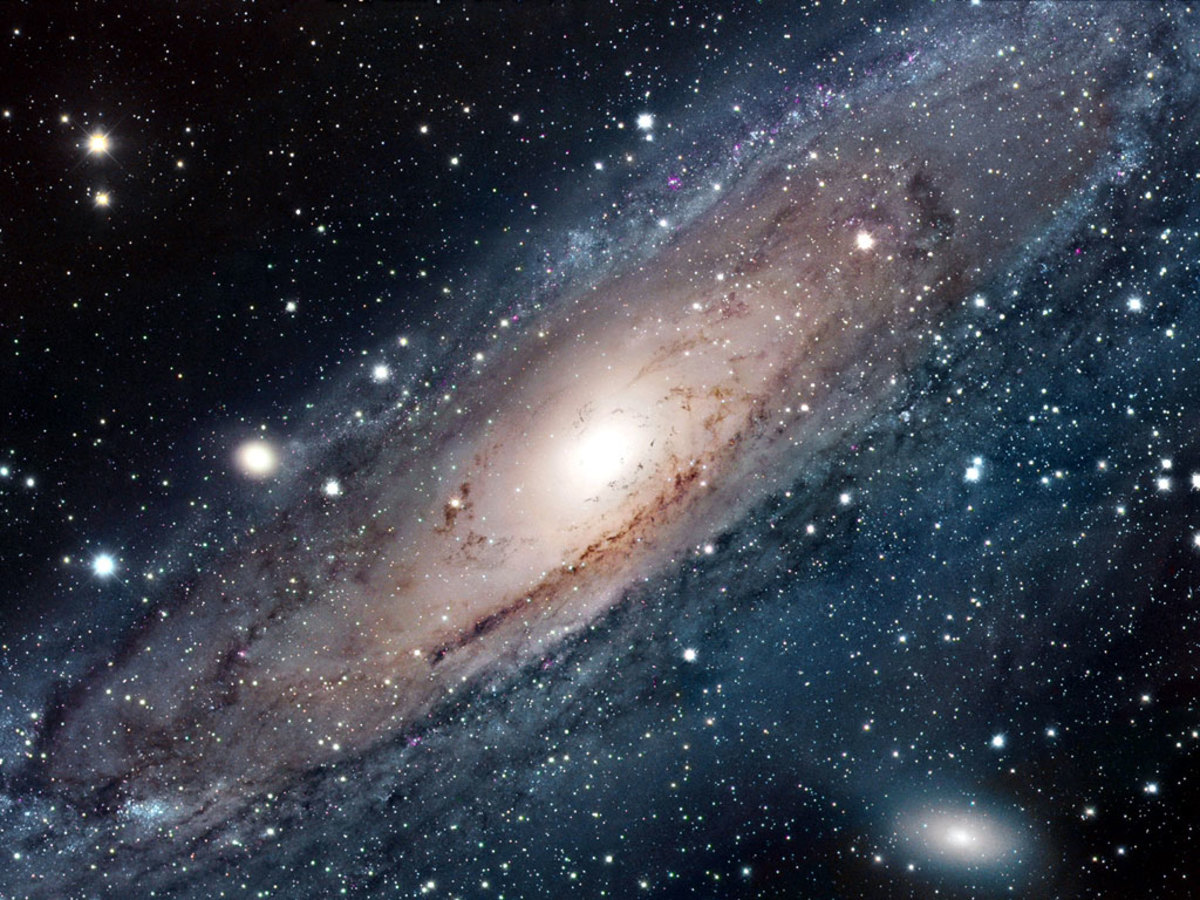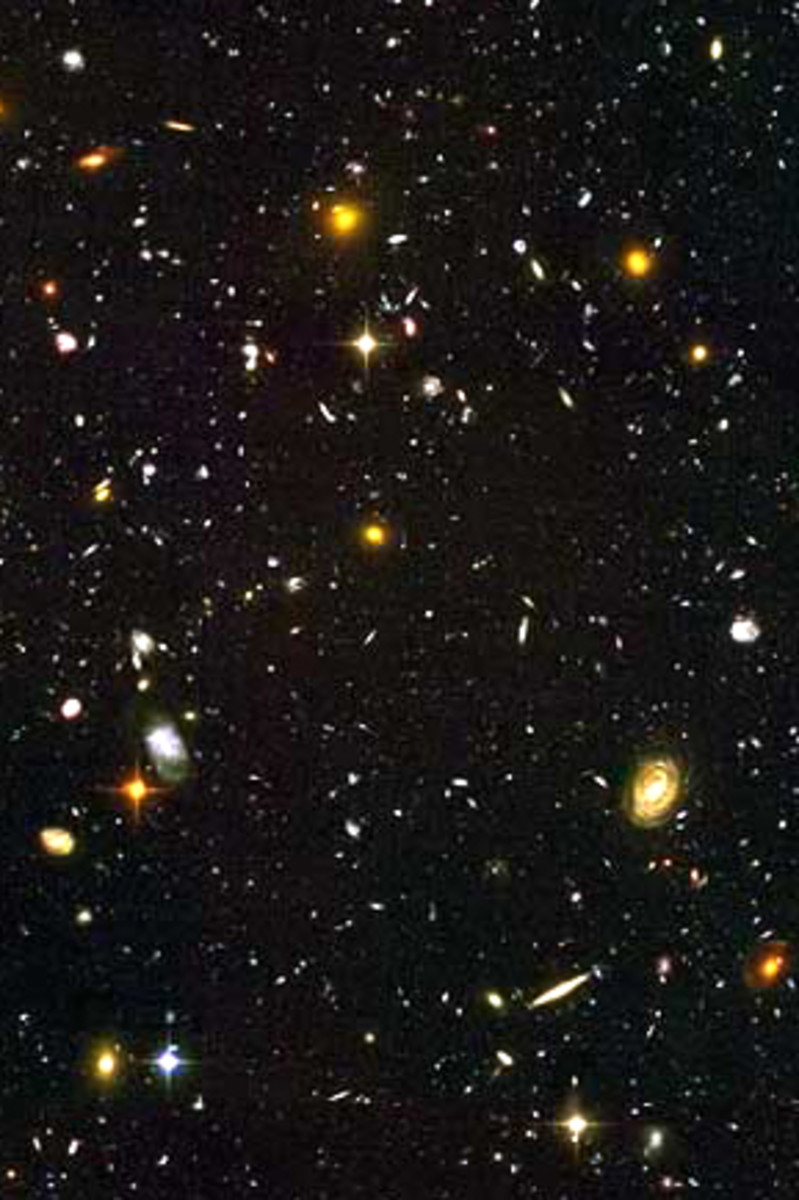the Drake Equation & Catastrophe
Newly forming solar systems are relatively easy to find
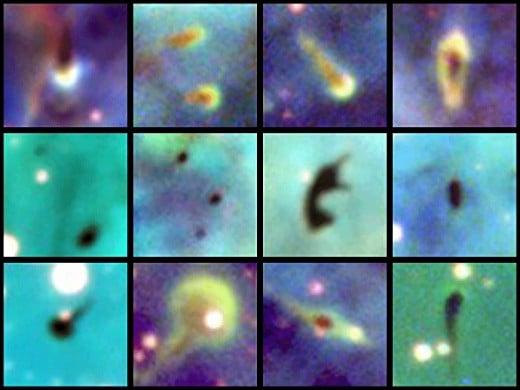
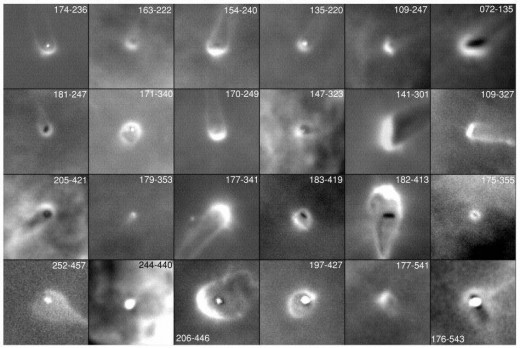
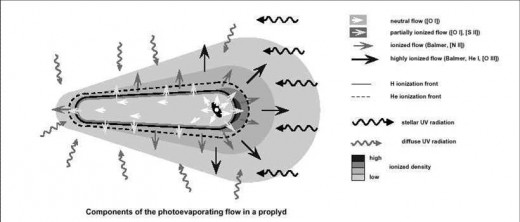
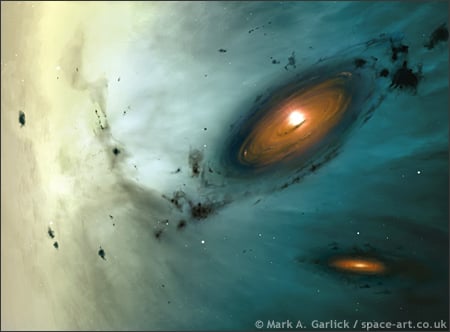
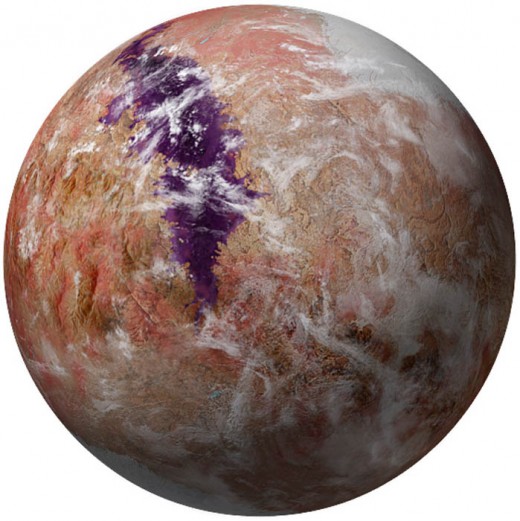
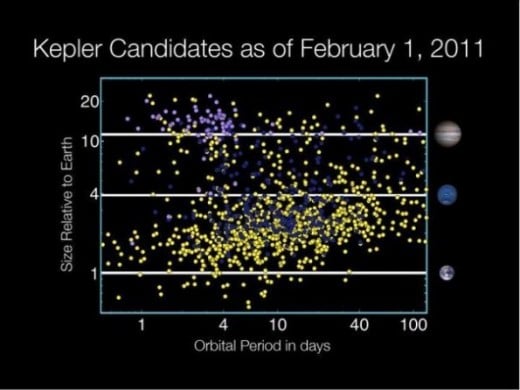
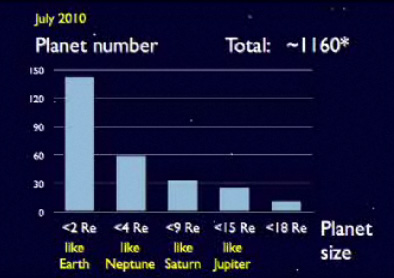
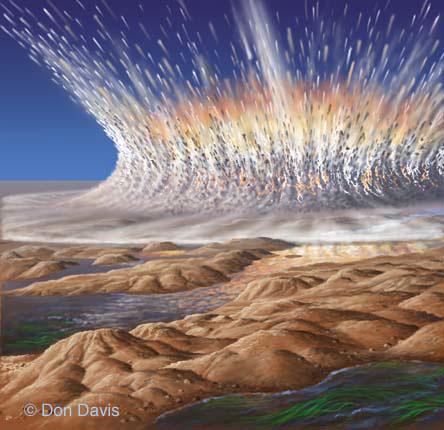
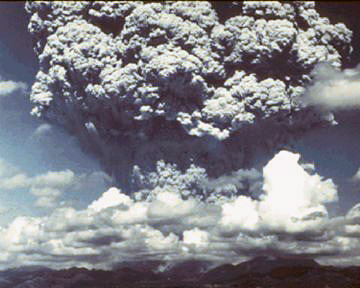


The search for life among the stars has given us tantalizing clues
We know and have seen proof of catastrophism and the role it plays in the evolution of life. The proof comes from mathematics, astrophysics, statistics, paleontology and features found on planets, moons and the Earth. Darwin even speculated on the role of catastrophes in evolutionary development, but lacked the proof. Recent findings in the Galapagos Islands during the last El Nino demonstrated that evolution could experience a quickening covering months. Changes related to adaptation within a radical environmental upheaval are virtually instantaneous, instead of being gradual over millions of years. The focus here is the so-called Drake equation for determining the possibility of other civilized and intelligent life forms in the galaxy.
An astronomer called Frank Drake established several conditions in 1961, which would allow for the development of a technologically advanced civilization that would be capable of communicating outside of their world. What he left out of the equation is the findings of complex astronomy, admittedly a new branch, but nonetheless having profound implications for the development of this kind of advanced and intellectual civilization. Drake looked at the stars and made a calculation on how many had planets and how many of those would be in the right relationship with their central star to allow for the development of life. He further considered the conditions that would allow for the development of complex life forms. The end result of his calculation was that he surmised that there are some 100,000 planets capable of supporting intelligent life in the galaxy. His equation consisted of,
N = R* + Fp + ne + Fl + Fi + Fc + L
where N is the number of civilizations that can communicate, R* is the number of sun like stars, Fp is the fraction of stars with planets, ne is the number of earth like planets, Fl the fraction with life, Fi the fraction where intelligence develops, Fc is the fraction where technology develops and L the "lifetime" of a communication civilization.
In light of what we have found with accretion dynamics and the evidence of impacts on Earth and their frequency, we'd like to add the above equation "I", which is the impact frequency on all stars and planets. Thus;
N = R* + Fp + ne + Fl + Fi + Fc + L + I
Let us revisit this idea in the light of dynamic accretion and catastrophe. First of all, based on the now established reality of the power law of size distribution, almost all stars have an accretion disk of various densities and composition. The power law of size distribution is simply expressed as,
No = 1/SD, or S = 1/ND
which simply means that the number, No, of objects of size S is an inverse power function. Larger objects would be few and smaller ones would increase in quantity in relation by the power law of D dimension. Typically, the power distribution suggests, at least for the solar system, that there are far more small objects than large ones on an inverse square power distribution. We choose the exponent D, because no two systems are the same, and the fractal power law would be more accurate generally where 1D --> 2 with the case being much closer to 2 presently. Typically, as a stellar system ages, smaller objects are cleared away, so the power function of size distribution would change gradually over time, which is why we chose a fractal exponent.
For the current epoch in the solar system, size number distributions seem to follow a power law. This square of size distribution may account for the seemingly rigid rotation of the outer fringes of galaxies as smaller unseen objects balance of the inverse power law of gravity in a mass distance relation. Our own galaxy displays a complex of motions that varies in a non-Keplarian fashion as distance from the center increases. But then again, there is some reason to believe that our galaxy is a barred spiral type, which in itself can account for the anomalies observed.
The proof of the fractal nature of the power law is found in our own galaxy as the rotation varies in a non-uniform manner as one moves from the center outward to the outer regions. This non-uniform nature of rotation does not diminish or increase smoothly, but increases and decreases erratically as one moves from the core out to the fringes. The only cause can be the non-uniform distribution of matter in our galaxy. This is proof in itself that establishes that the galaxy grew by cannibalizing other smaller galaxies close by and as a result, is a lumpy structured disk composed of the remnants of these formerly independent galaxies. Each region of our galaxy has its own specific density and rate of orbit. Size distribution and object number thus, must vary according to a fractal distribution where 1<D<=2.
Clearly some stellar systems would be ruled out as habitable. These would be the binary or multiple star systems and other proto solar systems that are poor in heavier elements. Binary or multiple stars account for about half of all orbiting groups in the galaxy. The others are also binary or multiple systems, only the companions are planets like gas giants, the so called failed stars, and smaller denser worlds coupled with an accretion disk with huge numbers of smaller pieces. The proof of this is seen in Beta Pictoris and in the proplyds in the Orion nebula. Hubble images show details of various proplyds in the Orion nebula that are clearly proto suns with accretion disks. Every stellar system would have an accretion disk of material, the bulk of which would consist of small objects in the trillions. The larger planets into distinct bands would sort these. The material thrown into chaotic orbits would accrete into the evolving planets, or be ejected into deep space as rogue bodies, perhaps to be captured by another stellar system.
We know that the Earth by inference has an averaged impact frequency of about 5,000 to 6,000 years. This has been determined from crater studies on the Moon, which has some 300,000 "fresh" craters that were created after the period of heavy bombardment from 3.95 billion to 3.85 billion years ago. Since the Earth is so much larger in surface area than the moon (some 20 time), more impacts would occur. In the same period, one could reasonably expect some 6,000,000 impacts on the Earth. Thus the averaged impact frequency as stated above.
The photos from Hubble Space Telescope show forming stars with accretion disks that could easily form into several planets each. This is one of several in the region. There are also rogue planets forming in the same nebula, unassociated with stars. Several stars are already glowing near the center of their accretion disks as in this view of one system with a star and planetary disk.
Impact events vary. Most are small and some are bigger and a few are enormous. It's the enormous ones that cause extinctions and sterilization events. The big ones that are more frequent, can cause some extinction, and certainly set civilizations on there asses so to speak. There is increasing evidence of such an event 12,600 years ago that caused a North American extinction event and a sudden rise in sea levels and atmospheric methane. Some sources even suggest that this marked the end of Atlantis and cite the evidence of hundreds of underwater cities, villages and human habitation. The smaller impacts can cause local damage and a lot of fright. Currently, we seem to be experiencing Tungeska sized events on average about once every 30 years. Smaller events, such as bolides that explode with the force of a Hiroshima bomb high in the stratosphere, occur about once a fortnight. Some have been initially mistaken for a provocative nuclear attack. Disaster was averted by mere seconds in some cases. Cometary or stony objects of 10 meters or less in size cause these explosions.
From what we have learned thus far, the evolution of planetary systems goes something like this.
History has legends of great disasters and we can trace these events through at least four great ages of destruction and creation. Some sources suggest more cycles. There is also plenty of evidence by way of large fresh craters on Earth, some of which are less than 4,000 years old, located near Campo Del Cielo 27 degrees 38 minutes south 61 degrees 42 minutes West in South America ranging in size from 115 meters down to 20. Previous to that is Rio Cuarto Ar at 32 degrees South 064 degrees 14 minutes West and dated at 10,000 years with a size of 4.5 x 1.1 kilometers.
There are of course, others. These are just the land impacts, accounting for only 29 percent of the possibilities. 12,600 years ago, a fairly large impact created substantial devastation. It may have been only one of a group of objects. Impacts tend to cluster around certain dates, suggesting multiple impacts resulting from fragmented rubble piles torn apart inside the Earth's Roche limit. Many sites have several craters, showing that there is a definite possibility of multiple impacts. Most impacts of course, land in the ocean, causing tsunamis that would certainly prove devastating to coastal civilizations. We wonder if the group of events that occurred 12,600 years ago were responsible for the demise of the legendary Atlantis, that "sank beneath the ocean in a single day." It certainly would have inspired the plethora of flood legends that come from virtually all corners of the Earth. This then represents the recent case and all the evidence is not in yet!
So if this what occurs on the Earth, where civilizations are repeatedly wiped out, then a similar thing is occurring throughout the galaxy in a more or less even pace to the events in our solar system. Given the facts that dynamic accretion is the norm, then one can appreciate that the allotted time for civilizations to evolve and reach into space is about 5,000 to 6,000 years according to the pace of events in the solar system. Now the pace of planetary evolution differs from solar system to solar system. We don't have figures for those, and only fragmentary information for ours. A general law of accretion tells us that the stronger the gravity, the faster the evolution and vice versa. But the point remains. All solar systems capable of supporting life, 100,000 strong according to the Drake equation estimate, go through repeated bombardment, with the consequence of being reset back to the equivalent to a stone age for us; even possible extinction. So, 100,000 potential planets capable of supporting civilizations being struck on average of say, once every 5,000 years, gives a mere 20 planets at any time with a civilization comparable or slightly more or less advanced than ours. All the rest would still be at various stages of struggling out of their most recent disaster, which curiously, also occur at 20 a year on average throughout the galaxy. Given the dimension of our local galaxy, 20 comparable civilizations to ours would be spread out so thinly, that the closest one to us would be an averaged 10,000 light years off. Given that distance and our level of technology or something slightly more advanced, interstellar visits are virtually ruled out! Then there are the great extinction cycles caused by huge events like super volcanoes and Chixculub sized impactors. If our galaxy is a barred spiral with two super-massive black holes, extinction cycles of 26 to 30 million years would be a common denominator throughout the entire galaxy. There exists gathering proof that the galaxy contains two or more super sized black holes. There is the main one located from us at 26,000 light years in the direction of Sagittarius alpha and there is a secondary one in orbit at about 700 light years from the main one. Others were brought in via cannibalized galaxies in the distant past. They lie peppered throughout the main disk and form local centers such as within massive globular clusters.
If indeed, the 10,000 light year separation between intelligent civilizations in space is the average, and the lifetime of a civilization is only 5,000 to 6,000 years and communications technology less than a thousand years, then it is clear why we haven't heard anyone calling us on the space telephone or radio. Civilizations developing communications technology at the right junctures of time to touch base with another not yet born would likely be an extremely rare event. On top of all this, distant space travel is a formidable task, even for an advanced species. There are unseen traps, likely in the form of black holes. Then there's all that radiation. Small and unseen bodies lie strewn between the stars in there multi-trillions. Any one of these could pulverize a concrete bunker to atomic dust, let alone a fragile space ship traveling at high speed. Relatively low speed impacts on Earth by small objects are testament to the kinds of obstacles to be overcome in long-range space travel between the stars.
Time lapse animation of a stellar planetary system in evolution
But the impact limitation is not the only influence. There are others like super-volcanic explosions and activity associated with stellar evolution. Earth and civilizations thereon, have been influenced by huge volcanic events, such as what occurred with Krakatoa in Feb. 535 AD and Toba 74,000 years ago. The Minoan civilization disappeared into dust when Santorini blew up most of the island of Thera in 1646 BCE. The Bible relates about the end of Sodom and Gomorrah which some interpret as a volcanic event. Then there were the events that formed Crater Lake and the region where Yellowstone Park exists today. The 535 AD event caused global cooling for some twenty years and ended up obliterating the Roman and Mesoamerican civilizations of the period. Others had their birth from this time. Ice cores from Antarctica, Greenland and the Himalayas are littered with volcanic evidence given away by sulfur signatures as opposed to iridium that is the trace of impact events. Then there are perturbation effects caused by other planets. Earth and Venus have a 100,000-year dance that matches Milanikovich cycles. Factoring these into the equation would make us the only civilization in this galaxy at our level! Others may well have existed, but far in the past. One might have overcome the myriad barriers. Maybe we'll be that one civilization. Civilizations at or beyond our level may be spread one for each group of galaxies. Contact under present circumstances is ruled out completely. Given this information, some of which is sketchy and some solidly founded, SETI would appear to be a waste of valuable time and money, which could be better spent detecting impact hazards and preventing them, thus increasing our chances of survival to become a super species and rise to the level of a type one or type two civilization.
This does not rule out the possibility of some species becoming space faring if they recognized the danger and took appropriate steps. This then is our current dilemma and choice and if we are to survive well into the future, we must also become a space living species. This includes the utilization of asteroids and comets. The successful NEAR mission to Eros is a good first step, but it cannot be the only one! We should use civilization for the benefit of all instead of the historical and current trend of coercion and terror to keep most of humanity under the subjugation of the few for short term profit, however that may be defined. Civilization under current conditions contains a fatal flaw. This must be corrected if we are to become a space born species. Otherwise, the blindness to all but maximum profit could well end up driving humanity to extinction. One more opportunity and experiment in the cosmic scheme of things will have failed. Somewhere in the universe, a species will ultimately overcome the limits imposed by all the events that can potentially exterminate it. Maybe it will be us, but under current conditions, it is unlikely. A few aware people are not enough to save a species. This has been demonstrated as accurate in the past. The task at hand will take the commitment of everyone. Humanity will require a revolution in order to survive the inevitable.
The fact that species evolve along many different body plans is revealed in the investigations of the between impact epochs of Earth defining 26 to 30 million year great catastrophic evolutionary cycles. Each epoch evolved different life forms. Life has taken many forms just on Earth. Thus, if we were to ever encounter anything in the depths of space, we can expect it to be as radically different from us, as we are to dinosaurs, creatures of the Burgess Shale, or tube worms in the depths of our current oceans. Intelligence will almost certainly follow different paths to the discovery of the same universal laws and how to apply them.
Check out this fabulous animation! It's a piece of art!


